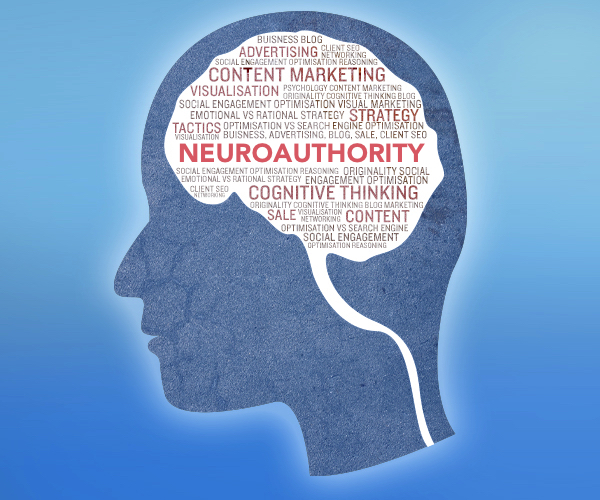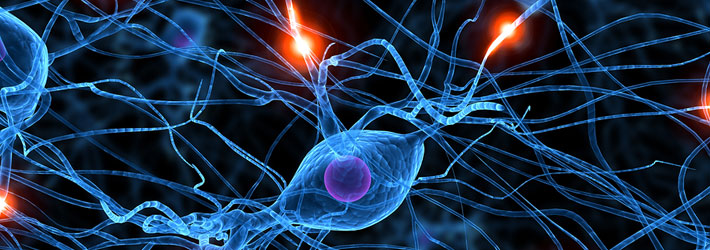This a somewhat long post, so sit back, relax, and take a few minutes to read it all.
Parts of it are a little scientific at times, but you should be able to understand the concepts.
It could be the one piece of the puzzle you've been missing.
First, “NeuroAuthority” is the combination of neuroscience and authority marketing.
We discovered this last year, and started testing pieces of it immediately in our business. We want to give you the results today.
So, let's get a little background on each of those pieces first.
Neuroscience Enters Marketing
Neuromarketing is a new field of marketing research that studies consumers' sensorimotor, cognitive, and affective response to marketing stimuli.
The neuromarketing concept was developed by psychologists at Harvard University in 1990.
The technology is based on a model whereby the major thinking part of human activity (over 90%), including emotion, takes place in the subconscious area that is below the levels of controlled awareness.

Neuromarketing taps into the pleasure centers of our brains, and uses the tools of neuroscience to determine why we prefer some products over others.
For this reason, the perception technologists of the market are very tempted to learn the techniques of effective manipulation of the subconscious brain activity.
The main reason is to inspire the desired reaction in person’s perception as deeply as possible.
The base measure is neuromarketing is something known as a “meme”.
Meme is a unit of information stored in the brain. These units are effective at influencing a person who is making choices and decisions within 2.6 seconds.
If “meme” is chosen properly we remember the good, joke or song and would share it. Memes stay in memory and they are affected by marketers.
Neuromarketing and the “Pepsi Challenge”
In a study from the group of Read Montague published in 2004 in Neuron, 67 people had their brains scanned while being given the “Pepsi Challenge”, a blind taste test of Coca-Cola and Pepsi.
Half the subjects chose Pepsi, since Pepsi tended to produce a stronger response than Coke in their brain's ventromedial prefrontal cortex, a region thought to process feelings of reward.
But when the subjects were told they were drinking Coke three-quarters said that Coke tasted better.
Their brain activity had also changed. The lateral prefrontal cortex, an area of the brain that scientists say governs high-level cognitive powers, and the hippocampus, an area related to memory, were now being used, indicating that the consumers were thinking about Coke and relating it to memories and other impressions.
The results demonstrated that Pepsi should have half the market share, but in reality consumers are buying Coke for reasons related less to their taste preferences and more to their experience with the Coke brand.
Neuromarketers goal is to recreate similar brand experiences with their clients.
The Rise of Authority Marketing

The “authority pyramid” represents the levels of perceived authority. Using authority marketing principles, people are able to move to higher levels much faster.
Authority marketing helps entrepreneurs leverage their knowledge to gain authority status in their industry.
This authority status then allows them to dramatically amplify their message and convert their new audience into higher paying customers.
In other words, it's the process for positioning yourself as an authority, or even a celebrity, in your marketplace.
Strategies which are used to improve your expert positioning include highlighting your media appearances, your published books and creating content that solidifies you as an “educator and advocate for the success of your prospects and customers.”
Basically, anything which can provide instant proof to a prospect that you are more qualified than your competitors, and get them to choose you.
The Birth of “NeuroAuthority”

NeuroAuthority uses neuroscience to determine why we deem one person as an authority. Then builds these into repeatable tactics that others can utilize.
NeuroAuthority is the science of creating authority positioning in the subconscious area that is below the levels of controlled awareness.
It’s using the proven tools of neuroscience to determine why we deem one person as “expert” over another.
…and then apply the research so you can use it to get more clients.
Traditional methods of most marketers to gain influence and attention in their niche won’t help find what triggers decisions in the human brain.
They use whatever the “shiny button” is at the moment, and just hoping (or even guessing) that it will work.
Instead, they should use a scientific approach to capture insights which predict why prospects will choose to follow, respect…and eventually buy from one person over another.
I want to clarify that NeuroAuthority is not about manipulating your prospects. You are trying to persuade them, so you can help make their life better.
My friend, Bob Burg, gave a good explanation of the difference between manipulation and persuasion:
Persuasion aims to serve; manipulation, to hurt. Or, if not necessarily intending to hurt, certainly not caring if it does. The manipulator is simply so focused on him or herself and their own self-interest that — like any other totally self-serving organism — they do only what they feel is for their own benefit and, if someone must suffer as a result, then so be it.
The techniques I'm about to share with you are very powerful, and I want to make sure you are clear on the purpose of it, and will only use them to truly help your prospects..not manipulate or deceive them in any way.
Now that we have explained the background of neuroscience, authority marketing and the principles of NeuroAuthority…let's dig in to some tactics you can use in your business..
5 NeuroAuthority Tactics You Can Use To Build Authority Positioning At A Subconscious Level
1.) Leverage Scarcity to Persuade Immediate Interaction
The first step to being seen as an authority to your prospects, is to get them to consume some of your content.
Play off the the fact that people want what they can’t have.
This is the scarcity principle, and it works whether it is supply driven (e.g., there is a limited quantity available) or deadline driven (as when there is a time limit set on the availability).
If a prospect feels he can come back to your site at any time to grab that piece of content, he feels no urgency to consume it now. You will most likely lose them.
But, if you alert him that it's only available for a limited time, you immediately create a sense urgency that didn’t exist before.
Why?
Because people have a natural aversion to loss–they’d rather act too hastily, knowing full well that they haven’t given the matter proper consideration, than risk missing out.
2. Use Anchoring To Help Prospects See You As The #1 Expert
People have a tendency to rely too heavily on the first piece of information presented when making decisions. This becomes the “anchor” against which subsequent products will be compared.
For example, the initial price offered for a used car sets the standard for the rest of the negotiations, so that prices lower than the initial price seem more reasonable even if they are still higher than what the car is really worth.
This is also true when they are first introduced to your content (and you).
One of 2 things will happen:
1. That person will compare you to someone else (their “anchor”) if your content is similar.
2. They will have no one to compare it to, and you will be cemented as the “anchor” for that type of information.
We refer to this as “MicroSpecialization” and it's a pillar of authority marketing.
The key here is to solve a very specific problem, for a very specific subset of a market. Make it so granular, that your prospects have no “anchor” to compare it to.
3. Reciprocity
In 2002, researchers tried an experiment with tipping in restaurants. They wanted to see what would happen when the server supplied a piece of candy along with each check.
They tried a series of scenarios where servers put a small piece of chocolate on the check, gave a larger quantity of candy or gave no candy at all.
What they learned was that the gift of candy increased the average tip from 15 percent to just under 18 percent.
The technique at work was reciprocity. People are driven to repay debts of all kinds — no matter how small.
Brian Tracy explains it best, “If you do something nice for me I’ll do something nice for you. I feel obligated to reciprocate.”
You can use this impulse to build authority positioning. By giving your site visitors something of value, with no expectation of anything in return, you can begin to harness the power of reciprocity.
Offer information that has real value, and is obviously and exclusively for the benefit of the recipient.
That last point is especially important — nobody wants to feel that they are being manipulated or receiving a gift with “strings attached.”
4. Offer High Dollar Packages You Don’t Expect To Sell
On the surface, it may seem odd to try to sell a product or service on your website that you don’t really expect anyone to buy. Yet, according to a compliance technique called door-in-the face, this strategy will actually help you sell lower priced options.
Here’s how it works: you start with an unreasonably large option, for example a VIP consulting day for $10,000. Two things happen:
1. The site visitor subconsciously is disinterested due to the price. According to social psychologists, he’s more likely to buy a $1500 package after first rejecting the pricier option, than if he were simply presented $1500 offer up front.
2. They assume that you added it to your site because other people are buying it, and therefore equating the value of your expertise to that high number.
5. Throw Out A Lifeline With The Hurt & Rescue Principle
In this method, you allow the prospect to see that they have a problem, and then offer a way to fix it.
Use your web copy to point out to visitors how much money they are losing, time they are wasting, or stress they are experiencing, and then offer them a solution.
Or, as the people at the persuasion site ChangingMinds.org put it, “A drowning person will clutch at a straw, so push them in the water, then throw them a rope.”
Hurt and rescue sounds negative, but it’s really nothing more than emotion-based selling.
Show that you understand your customers’ pain points, and you’ll be more effective in persuading them to consider your solution.
.
You may have noticed a trend here…content is still king.
Showing prospects that you understand at least one of their problems, and can solve it for them quickly, will attract and convert your perfect clients at a higher level than any other type of marketing.
Using these NeuroAuthority techniques will help you do this at a higher level by appealing to their subconscious too.


